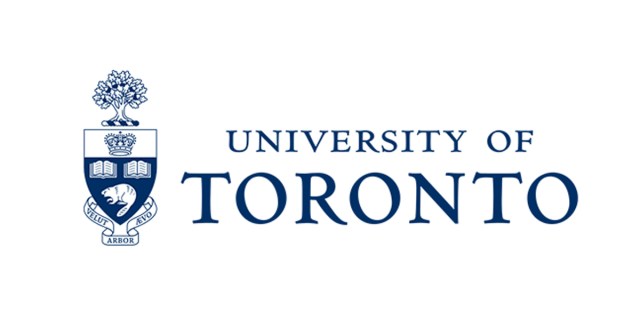Articles

 Hitler did not fear
retribution for the Holocaust. Why? He
didn’t think the world would care, asking as
he prepared to invade Poland “Who today
still speaks of the massacre of the
Armenians?”In 1915, there were 2 million
Armenians living in the declining Ottoman
Empire. But under the cover of World War I,
the Turkish government systematically
destroyed 1.5 million people in attempts to
unify all of the Turkish people by creating
a new empire with one language and one
religion.
Hitler did not fear
retribution for the Holocaust. Why? He
didn’t think the world would care, asking as
he prepared to invade Poland “Who today
still speaks of the massacre of the
Armenians?”In 1915, there were 2 million
Armenians living in the declining Ottoman
Empire. But under the cover of World War I,
the Turkish government systematically
destroyed 1.5 million people in attempts to
unify all of the Turkish people by creating
a new empire with one language and one
religion.
This ethnic cleaning of Armenians, and other
minorities, including Assyrians, Pontian and
Anatolian Greeks, is today known as the
Armenian Genocide.
 Despite pressure from Armenians and
activists worldwide, Turkey still refuses to
acknowledge the genocide, claiming that
there was no premeditation on the deaths of
the Armenians.
Despite pressure from Armenians and
activists worldwide, Turkey still refuses to
acknowledge the genocide, claiming that
there was no premeditation on the deaths of
the Armenians.
Precursors to Genocide
History of the Region
The Armenians have lived in the southern
Caucasus since the 7th century BC and have
fought to maintain control against other
groups such as the Mongolian, Russian,
Turkish, and Persian empires. In the 4th
century, the reigning king of Armenia became
a Christian. He mandated that the official
religion of the empire be Christianity,
although in the 7th century AD all countries
surrounding Armenia were Muslim. Armenians
continued to be practicing Christians,
despite the fact that they were many times
conquered and forced to live under harsh
rule.
The roots of the genocide lie in the
collapse of the Ottoman Empire. At the turn
of the 20th Century, the once widespread
Ottoman Empire was crumbling at the edges.
The Ottoman Empire lost all of its territory
in Europe during the Balkan Wars of
1912-1913, creating instability among
nationalist ethnic groups.
The First Massacres
There was growing tension between Armenians
and Turkish authorities at the turn of the
century. Sultan Abdel Hamid II, known as the
“bloody sultan”, told a reporter in 1890, “I
will give them a box on the ear that will
make them relinquish their revolutionary
ambitions.”
In 1894, the “box on the ear” massacre was
first of the Armenian massacres. Ottoman
forces, military and civilians alike
attacked Armenian villages in Eastern
Anatolia, killing 8,000 Armenians, including
children. One year later, 2,500 Armenian
women were burned to death in Urfa
Cathedral. Around the same time, a group of
5,000 were killed after demonstrations
begging for international intervention to
prevent massacres upset officials in
Constantinople. By 1896, historians estimate
that over 80,000 Armenians had been killed.
The Rise of the Young Turks
In 1909, the Ottoman Sultan was overthrown
by a new political group – the “Young
Turks”, a group eager for a modern,
westernized style of government. At first,
Armenians were hopeful that they would have
a place in the new state, but they soon
realized that the new government was
xenophobic and exclusionary to the
multi-ethnic Turkish society. To consolidate
Turkish rule in the remaining territories of
the Ottoman Empire, the Young Turks devised
a secret program to exterminate the Armenian
population.
WWI
In 1914, the Turks entered World War I on
the side of Germany and the Austro-Hungarian
Empire. The outbreak of war would provide
the perfect opportunity to solve the
“Armenian question” once and for all.
Military leaders accused Armenians of
supporting the Allies under the assumption
that the people were naturally sympathetic
toward Christian Russia. Consequently, Turks
disarmed the entire Armenian population.
Turkish suspicion of the Armenian people led
the government to push for the “removal” of
the Armenians from the war zones along the
Eastern Front.
Genocide Begins
Transmitted in coded telegrams, the mandate
to annihilate Armenians came directly from
the Young Turks. Armed roundups began on the
evening of April 24, 1915, as 300 Armenian
intellectuals – political leaders,
educators, writers, and religious leaders in
Constantinople – were forcibly taken from
their homes, tortured, then hanged or shot.
The death marches killed roughly 1.5 million
Armenians, covered hundreds of miles and
lasted multiple months. Indirect routes
through wilderness areas were deliberately
chosen in order to prolong marches and keep
the caravans away from Turkish villages.
In the wake of the disappearance of the
Armenian population, Muslim Turks quickly
assumed ownership of everything left behind.
The Turks demolished any remnants of
Armenian cultural heritage including
masterpieces of ancient architecture, old
libraries and archives. The Turks leveled
entire cities including the once thriving
Kharpert, Van and the ancient capital at
Ani, to remove all traces of the three
thousand year old civilization.
No Allied power came to the aid of the
Armenian Republic and it collapsed. The only
tiny portion of historic Armenia to survive
was the easternmost area because it became
part of the Soviet Union. The University of
Minnesota’s Center for Holocaust and
Genocide Studies compiled figures by
province and district that show there were
2,133,190 Armenians in the empire in 1914
and only about 387,800 by 1922.
An Unsuccessful Call to Arms in the West
At the time, international informants and
national diplomats recognized the atrocities
being committed as an atrocity against
humanity.
Leslie Davis, U.S. consul in Harput noted,
“these women and children were driven over
the desert in midsummer and robbed and
pillaged of whatever they had … after which
all who had not perished in the meantime
were massacred just outside the city.”
In a 1915 letter home, Swedish Ambassador
Per Gustaf August Cosswa Anckarsvärd noted,
“The persecutions of the Armenians have
reached hair-raising proportions and all
points to the fact that the Young Turks want
to seize the opportunity … [to] put an end
to the Armenian question. The means for this
are quite simple and consist of the
extermination of the Armenian nation.”
 Even Henry Morgenthau, the U.S. Ambassador
to Armenia, noted “When the Turkish
authorities gave the orders for these
deportations, they were merely giving the
death warrant to a whole race.”
Even Henry Morgenthau, the U.S. Ambassador
to Armenia, noted “When the Turkish
authorities gave the orders for these
deportations, they were merely giving the
death warrant to a whole race.”
The New York Times also covered the issue
extensively — 145 articles in 1915 alone —
with headlines like “Appeal to Turkey to
Stop Massacres.” The newspaper described the
actions against the Armenians as
“systematic,” “authorized,” and “organized
by the government.”
The Allied Powers (Great Britain, France,
and Russia) responded to news of the
massacres by issuing a warning to Turkey,
“the Allied governments announce publicly
that they will hold all the members of the
Ottoman Government, as well as such of their
agents as are implicated, personally
responsible for such matters.” The warning
had no effect.
Because Ottoman Law prohibited taking
pictures of Armenian deportees, photo
evidence that documented the severity of the
ethnic cleansing is rare. In an act of
defiance, officers from the German Military
Mission documented atrocities occurring in
concentration camps. While many pictures
were intercepted by Ottoman intelligence,
lost in Germany during WWII, or forgotten in
dusty drawers, the Armenian Genocide Museum
of America has captured some of these photos
in an online exhibit.
 Recognizing Genocide
Recognizing Genocide
Today Armenians commemorate those who lost
their lives during the genocide on April 24,
the day in 1915 when several hundred
Armenian intellectuals and professionals
were arrested and executed as the start of
the genocide.
In 1985, the United States named this day
“National Day of Remembrance of Man’s
Inhumanity to Man”, in “honor of all of the
victims of genocide, especially the one and
one-half million people of Armenian ancestry
who were the victims of the genocide
perpetrated in Turkey.”
Today, recognizing the Armenian Genocide is
a hot-button issue as Turkey criticizes
scholars for both inflating the death toll
and for blaming Turks for deaths that the
government says occurred because of
starvation and the cruelty of war. In fact,
speaking about the Armenian genocide in
Turkey is punishable by law. As of 2014, 21
countries total have publicly or legally
recognized this ethnic cleansing in Armenia
as genocide.
In 2014, on the eve of the 99th anniversary
of the genocide, Turkish Prime Minister,
Recep Tayyip Erdogan, offered condolences to
the Armenian people, saying, “The incidents
of the first world war are our shared pain.”
However, many feel that offerings are
useless until Turkey recognizes the loss of
1.5 million people as genocide. In response
Erdogan’s offering, Armenian President Serzh
Sarkisian said, “The denial of a crime
constitutes the direct continuation of that
very crime. Only recognition and
condemnation can prevent the repetition of
such crimes in the future.”
Ultimately, the recognition of this genocide
is not only important to redress the
affected ethnic groups, it is essential for
the development of Turkey as a democratic
state. If the past is denied, genocide is
still occurring. A Swedish Parliament
Resolution asserted in 2010 that, “the
denial of genocide is widely recognized as
the final stage of genocide, enshrining
impunity for the perpetrators of genocide,
and demonstrably paving the way for future
genocides.”

 Hitler did not fear
retribution for the Holocaust. Why? He
didn’t think the world would care, asking as
he prepared to invade Poland “Who today
still speaks of the massacre of the
Armenians?”In 1915, there were 2 million
Armenians living in the declining Ottoman
Empire. But under the cover of World War I,
the Turkish government systematically
destroyed 1.5 million people in attempts to
unify all of the Turkish people by creating
a new empire with one language and one
religion.
Hitler did not fear
retribution for the Holocaust. Why? He
didn’t think the world would care, asking as
he prepared to invade Poland “Who today
still speaks of the massacre of the
Armenians?”In 1915, there were 2 million
Armenians living in the declining Ottoman
Empire. But under the cover of World War I,
the Turkish government systematically
destroyed 1.5 million people in attempts to
unify all of the Turkish people by creating
a new empire with one language and one
religion.This ethnic cleaning of Armenians, and other minorities, including Assyrians, Pontian and Anatolian Greeks, is today known as the Armenian Genocide.
 Despite pressure from Armenians and
activists worldwide, Turkey still refuses to
acknowledge the genocide, claiming that
there was no premeditation on the deaths of
the Armenians.
Despite pressure from Armenians and
activists worldwide, Turkey still refuses to
acknowledge the genocide, claiming that
there was no premeditation on the deaths of
the Armenians.History of the Region
The roots of the genocide lie in the collapse of the Ottoman Empire. At the turn of the 20th Century, the once widespread Ottoman Empire was crumbling at the edges. The Ottoman Empire lost all of its territory in Europe during the Balkan Wars of 1912-1913, creating instability among nationalist ethnic groups.
There was growing tension between Armenians and Turkish authorities at the turn of the century. Sultan Abdel Hamid II, known as the “bloody sultan”, told a reporter in 1890, “I will give them a box on the ear that will make them relinquish their revolutionary ambitions.”
In 1894, the “box on the ear” massacre was first of the Armenian massacres. Ottoman forces, military and civilians alike attacked Armenian villages in Eastern Anatolia, killing 8,000 Armenians, including children. One year later, 2,500 Armenian women were burned to death in Urfa Cathedral. Around the same time, a group of 5,000 were killed after demonstrations begging for international intervention to prevent massacres upset officials in Constantinople. By 1896, historians estimate that over 80,000 Armenians had been killed.
In 1909, the Ottoman Sultan was overthrown by a new political group – the “Young Turks”, a group eager for a modern, westernized style of government. At first, Armenians were hopeful that they would have a place in the new state, but they soon realized that the new government was xenophobic and exclusionary to the multi-ethnic Turkish society. To consolidate Turkish rule in the remaining territories of the Ottoman Empire, the Young Turks devised a secret program to exterminate the Armenian population.
In 1914, the Turks entered World War I on the side of Germany and the Austro-Hungarian Empire. The outbreak of war would provide the perfect opportunity to solve the “Armenian question” once and for all.
Military leaders accused Armenians of supporting the Allies under the assumption that the people were naturally sympathetic toward Christian Russia. Consequently, Turks disarmed the entire Armenian population. Turkish suspicion of the Armenian people led the government to push for the “removal” of the Armenians from the war zones along the Eastern Front.
Transmitted in coded telegrams, the mandate to annihilate Armenians came directly from the Young Turks. Armed roundups began on the evening of April 24, 1915, as 300 Armenian intellectuals – political leaders, educators, writers, and religious leaders in Constantinople – were forcibly taken from their homes, tortured, then hanged or shot.
The death marches killed roughly 1.5 million Armenians, covered hundreds of miles and lasted multiple months. Indirect routes through wilderness areas were deliberately chosen in order to prolong marches and keep the caravans away from Turkish villages.
In the wake of the disappearance of the Armenian population, Muslim Turks quickly assumed ownership of everything left behind. The Turks demolished any remnants of Armenian cultural heritage including masterpieces of ancient architecture, old libraries and archives. The Turks leveled entire cities including the once thriving Kharpert, Van and the ancient capital at Ani, to remove all traces of the three thousand year old civilization.
No Allied power came to the aid of the Armenian Republic and it collapsed. The only tiny portion of historic Armenia to survive was the easternmost area because it became part of the Soviet Union. The University of Minnesota’s Center for Holocaust and Genocide Studies compiled figures by province and district that show there were 2,133,190 Armenians in the empire in 1914 and only about 387,800 by 1922.
At the time, international informants and national diplomats recognized the atrocities being committed as an atrocity against humanity.
Leslie Davis, U.S. consul in Harput noted, “these women and children were driven over the desert in midsummer and robbed and pillaged of whatever they had … after which all who had not perished in the meantime were massacred just outside the city.”
In a 1915 letter home, Swedish Ambassador Per Gustaf August Cosswa Anckarsvärd noted, “The persecutions of the Armenians have reached hair-raising proportions and all points to the fact that the Young Turks want to seize the opportunity … [to] put an end to the Armenian question. The means for this are quite simple and consist of the extermination of the Armenian nation.”
 Even Henry Morgenthau, the U.S. Ambassador
to Armenia, noted “When the Turkish
authorities gave the orders for these
deportations, they were merely giving the
death warrant to a whole race.”
Even Henry Morgenthau, the U.S. Ambassador
to Armenia, noted “When the Turkish
authorities gave the orders for these
deportations, they were merely giving the
death warrant to a whole race.”The New York Times also covered the issue extensively — 145 articles in 1915 alone — with headlines like “Appeal to Turkey to Stop Massacres.” The newspaper described the actions against the Armenians as “systematic,” “authorized,” and “organized by the government.”
The Allied Powers (Great Britain, France, and Russia) responded to news of the massacres by issuing a warning to Turkey, “the Allied governments announce publicly that they will hold all the members of the Ottoman Government, as well as such of their agents as are implicated, personally responsible for such matters.” The warning had no effect.
Because Ottoman Law prohibited taking pictures of Armenian deportees, photo evidence that documented the severity of the ethnic cleansing is rare. In an act of defiance, officers from the German Military Mission documented atrocities occurring in concentration camps. While many pictures were intercepted by Ottoman intelligence, lost in Germany during WWII, or forgotten in dusty drawers, the Armenian Genocide Museum of America has captured some of these photos in an online exhibit.

Today Armenians commemorate those who lost their lives during the genocide on April 24, the day in 1915 when several hundred Armenian intellectuals and professionals were arrested and executed as the start of the genocide.
In 1985, the United States named this day “National Day of Remembrance of Man’s Inhumanity to Man”, in “honor of all of the victims of genocide, especially the one and one-half million people of Armenian ancestry who were the victims of the genocide perpetrated in Turkey.”
Today, recognizing the Armenian Genocide is a hot-button issue as Turkey criticizes scholars for both inflating the death toll and for blaming Turks for deaths that the government says occurred because of starvation and the cruelty of war. In fact, speaking about the Armenian genocide in Turkey is punishable by law. As of 2014, 21 countries total have publicly or legally recognized this ethnic cleansing in Armenia as genocide.
In 2014, on the eve of the 99th anniversary of the genocide, Turkish Prime Minister, Recep Tayyip Erdogan, offered condolences to the Armenian people, saying, “The incidents of the first world war are our shared pain.”
However, many feel that offerings are useless until Turkey recognizes the loss of 1.5 million people as genocide. In response Erdogan’s offering, Armenian President Serzh Sarkisian said, “The denial of a crime constitutes the direct continuation of that very crime. Only recognition and condemnation can prevent the repetition of such crimes in the future.”
Ultimately, the recognition of this genocide is not only important to redress the affected ethnic groups, it is essential for the development of Turkey as a democratic state. If the past is denied, genocide is still occurring. A Swedish Parliament Resolution asserted in 2010 that, “the denial of genocide is widely recognized as the final stage of genocide, enshrining impunity for the perpetrators of genocide, and demonstrably paving the way for future genocides.”






